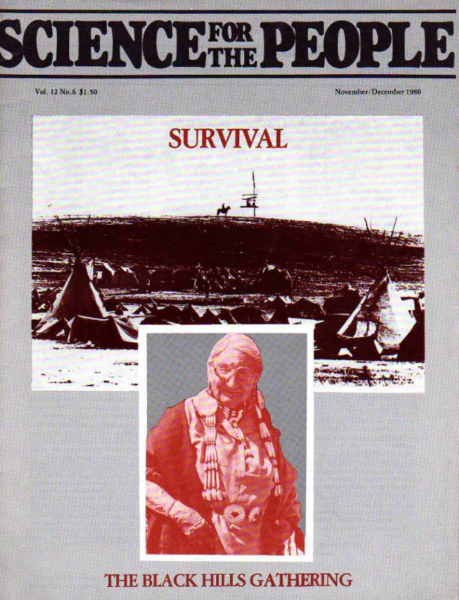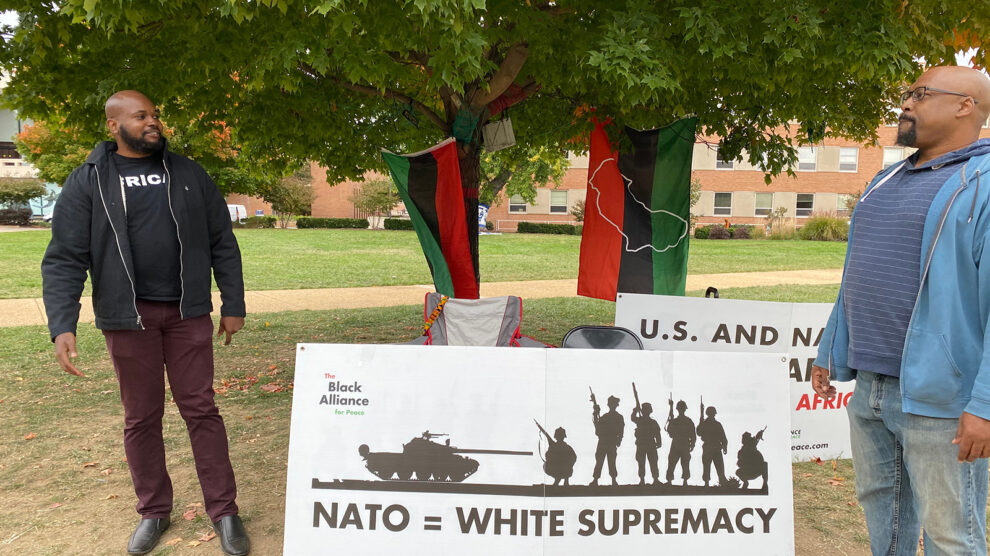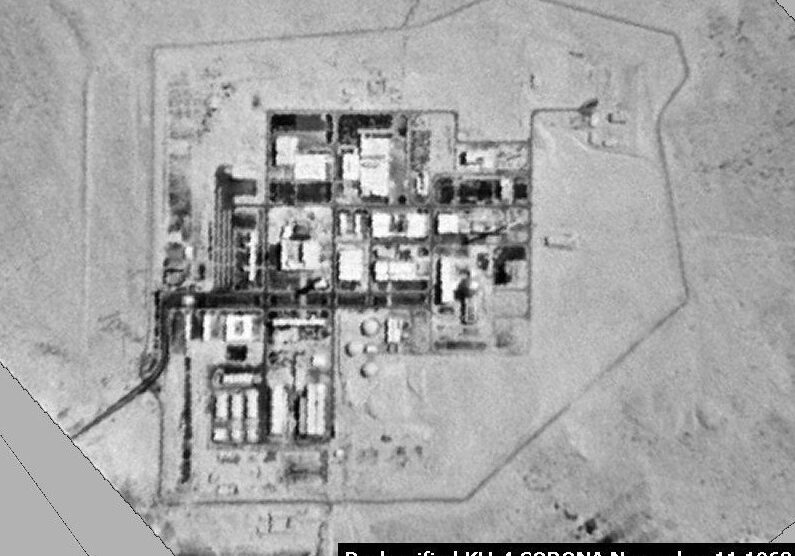Racism, Empire, and Native Liberation
By Erik Wallenberg
Racism has always been central to the process of empire-building. While today, anti-Arab racism, Islamophobia, and immigrant bashing are some of the main ideological bulwarks that keep the US military bloated with funding, historically racism has been generated against other populations. Regardless of the targets, enormous funding has been used over time to both reinforce racist notions and to conduct experiments on occupied populations for the benefit of the military, and the medical and scientific establishment.
This long history is brought to light in cases around the world in the latest issue of Science for the People. Organized around the theme “Science Under Occupation,” one author explores the infamous case of medical experimentation on Puerto Rican women. Sterilization without consent was only one of a host of practices carried out by a colonial administration that was not simply unethical, but brutal. While Puerto Rico was, and remains, a US colony, Native American populations across the US find themselves under a different kind of occupation. Their lands have been taken, their bodies confined to smaller and smaller plots of land, and their sovereignty violated regularly in the name of medical advances, science, security, and other markers of so-called progress.
In the September-October 1974 issue of Science for the People, authors Sandra Spier and Sam Skoog expose a long-standing program of medical experimentation on Native American’s living on the Red Lake Reservation. The Department of Defense, acting through the University of Minnesota, began a program in 1954 to investigate the bacterial agents of impetigo (a skin infection) and nephritis (inflammation of the kidneys, in this case related to impetigo) in cases on the reservation. The military was interested in how the diseases progressed, not in curing patients with easily available treatments. And so, on a reservation with an average life expectancy of forty-two years, the Native residents were not given the easily available treatment which investigators did not disclose this to their patients.
Racism was a central component of this experimentation. The military wanted to follow disease progression in a population that they believed was similar to the populations where they had large numbers of troops stationed in Southeast Asia and the Middle East, i.e., non-white populations. The racism, not to mention poor science, did not end there. While the study clearly was meant to benefit the military, the authors note the despicable role played by scientists building their careers on experimenting on Native American bodies instead of treating them. A final slap in the face is noted: the scientific papers that came out of this all acknowledge the military for funding, with no equivalent for the time, health, and lives of the Native American’s experimented on.
The authors’ conclusions show how little we’ve progressed in the past forty-five years. They note that “health care in this country is objectively racist” and “all low and middle income Americans of every race receive inadequate health care, and for the same reasons.” And while they don’t name the insurance industry as a cause, they do point out how our health is “sacrificed” for the careers of doctors and the agencies funding the medical programs.

Six years later, the November-December 1980 issue of Science for the People covered one of the most inspiring examples of Native American resistance. “People Unite for Survival” features a variety of reports, photographs from Ellen Shub, and an overview of one of the great anti-nuclear events of the era, the Black Hills Gathering. For ten days in the summer of 1980, over ten thousand people from around the world, representing more than forty countries, gathered in opposition to nuclear weapons and power, for an end to uranium mining, and for returning ancestral land to the Sioux Nation. Giving a sense of the broad alliance, Liberation News Service, Women of All Red Nations, and Miners for Safe Energy all contributed to the report of events. The Black Hills Alliance, a coalition of Native Americans and local white farmers, ranchers, and others, was at the center of it all. A Native American spokesperson saw the gathering as confirmation of movement toward one of their goals: to build a coalition so that they would not have to fight against their genocide alone. The reports in SftP range from news, to journals, to collections of quotes from participants to photographs, and show the variety of content the organization published; inspiration for the revived publication.
The second half of the article focuses on one aspect of nuclear power that is often lost in the discussions of nuclear today: uranium. The non-renewable and toxic mining of uranium required for nuclear power was central to the discussions in this era. We learn that at this time, “One hundred percent of all federally controlled uranium production comes from Indian reservations. One third of the U.S. coal reserves are also on Indian lands. If U.S. Indian nations were considered one nation, it would be the fifth largest producer of uranium in the world.” Finally, we learn that the Laguna Puebla reservation in New Mexico was the site of the largest uranium strip mine in the world. It was native lands and communities that bore the brunt of toxic dumping from uranium mining then, and it is Indigenous communities around the world who today are saddled with this toxic industry.
Science for the People continued covering these issues in the September-October 1982 issue, in an interview with Winona LaDuke. LaDuke has been a long-time Anishinaabe organizer for environmental justice and lives on the White Earth Reservation. In the interview, she talks about working to protect wild rice cultivation. Nearly forty years later, we can see that this work has been a great success and yet is threatened again today by the extractive energy industry. She is currently helping lead the battle against Line 3, a tar sands pipeline which threatens her native lands and water. In 1982 her concern was water, land, and buildings contaminated with radiation in the desert southwest. Today her concern is for oil contamination in the waters and broader environment in the upper Midwest.
The overarching concern then, as now, is the health of the people and the surrounding environment, clearly connected and dependent on one another. LaDuke gives many examples highlighting this point. The United Nuclear Company’s disaster in Church Rock, New Mexico, resulted in 100 million gallons of contaminated water and radioactive tailings bursting their dam at a holding pond and spilling into the Rio Puerco. Still the largest release of radioactive material in US history, it received little coverage even though it occurred only months after the infamous near meltdown of the Three Mile Island nuclear power plant. LaDuke takes us beyond the US, showing that globally it is Indigenous communities, living on and near where the vast majority of uranium mining occurs, who bear the brunt of pollution and poisoning. She argues, “in the name of economic and military security—control, occupation, and guns are the butter on the bread of oppression required to maintain uranium production.” Citing one of the largest miners of uranium, Apartheid South Africa, she notes how the security forces of the state are used to protect the private profits of corporations in these racist, colonial settler societies, the US included.
She also highlights the brilliant organizing efforts to bring justice. From her interview we learn of the women of Pine Ridge who conducted their own scientific investigations, going door-to-door carrying out surveys on public and environmental health. Under the auspices of Women of All Red Nations (WARN), they show contamination from the surrounding area, including the Air Force bombing range, spillage from an abandoned uranium mill, and use of carcinogenic defoliants. Asked if she thought native resistance would grow in the future, she answers, “Of course. The native has no choice but to act in defense of the native community and the natural environment. And episode after episode of native people’s resistance to techno-culture permeates the nuclear era…”
All of these issues raised in the pages of Science for the People need further investigation and examination today. “Science Under Occupation” begins the task but there remains much more to be done. We welcome further engagement on these issues as they manifest today, and on updating these still relevant questions and cases. These issues are manifestations of the bigger processes and systems we live under. As LaDuke notes, “Uranium itself is not what downpresses native peoples. If that were the case, the downpression would be restricted both in area and in time to the nuclear era. The downpression of native people is linked to the subjugation and exploitation of the Earth. With each subsequent generation, the techno-industrial system creates demands for more resources from the land. First it was land for agricultural crops, then for gold, then for iron, then for oil, and now uranium.” The particular issues and concerns may have changed and evolved, but the struggle against the subjugation of the Earth and its beings continues.





